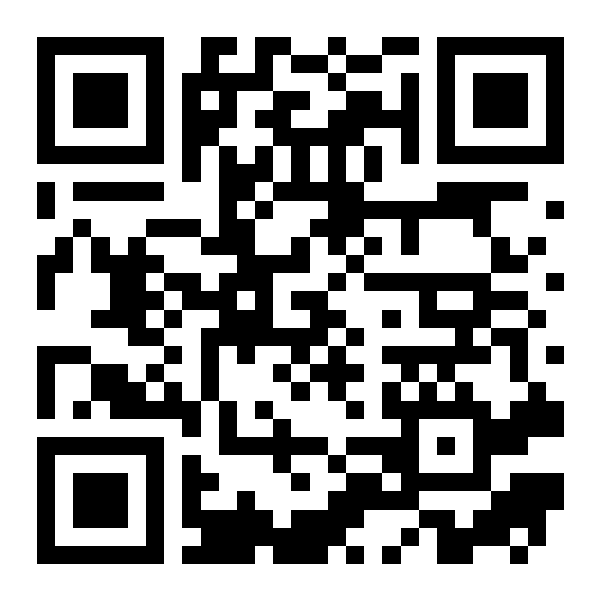YZi Labs' Latest Investment: Digital Asset Quietly Embarks on Building a $40 Trillion RWA Network
Original Article Title: "The Invisible Hand Behind the $4 Trillion RWA Empire: Digital Asset and Canton's Financial Infrastructure Ambitions"
Original Article Author: KarenZ, Foresight News
Editor's Note: This article was first published on July 1st. On July 4th, YZi Labs announced an investment in Digital Asset to promote compliance infrastructure development. This investment was made following Digital Asset's $135 million Series E funding announcement on June 24th. This funding round also includes participation from major financial institutions such as DRW, Tradeweb, DTCC, Citadel Securities, and Goldman Sachs.
On June 24th, Digital Asset, the developer of the privacy-focused blockchain Canton, completed a $135 million Series E funding round, led by DRW Venture Capital and Tradeweb Markets. The investor lineup includes heavyweight players from both traditional finance and the crypto space, including BNP Paribas, Circle Ventures, Citadel Securities, DTCC, Virtu Financial, Goldman Sachs, IMC, Liberty City Ventures, Optiver, Paxos, Polychain Capital, QCP, Republic Digital, 7RIDGE, and Virtu Financial.
Digital Asset stated that this funding round will accelerate the adoption of institutional and decentralized finance on the Canton Network, as well as its integration with RWAs, further solidifying its widespread deployment across diverse asset classes such as bonds, money market funds, alternative funds, commodities, repurchase agreements (repos), mortgages, life insurance, and annuities.
Little did many know, Digital Asset has been around for 11 years, with a total funding amount exceeding $4 billion. So, what exactly are Digital Asset and the Canton Network? What are the key features of their core technology? Why have they been able to attract the attention and adoption of multiple traditional financial institutions? What kind of expertise does the core team possess? Furthermore, what is the current momentum of Canton, and where will it go in the future?
Company Positioning and Journey
Digital Asset was founded in 2014, headquartered in New York, and is committed to unlocking the potential of cryptocurrency and the continuous integration of decentralized finance with traditional finance. Its core products include the Canton Network and the DAML smart contract language, together forming institutional-grade blockchain infrastructure. Digital Asset has raised over $4 billion in total funding.
The Canton Network is an open-source privacy Layer1 blockchain designed for financial institutions and enterprise applications. Canton achieves cross-app interoperability through the DAML language and the Canton protocol, supporting multi-subnet atomic transactions while ensuring privacy, independent scalability, and compliance.
Below is the development journey of Digital Asset since its founding 11 years ago:

Reference: Digital Asset Website
Team Background
The leadership team of Digital Asset has a deep background in finance, technology, and the blockchain industry.
Co-founder and CEO Yuval Rooz: Prior to founding Digital Asset, Yuval Rooz managed the electronic algorithmic trading team at DRW and later joined DRW Investment Group. He has also been a trader and developer at Citadel. Yuval Rooz is also a board member and CFO of the Global Synchronizer Foundation. Notably, Yuval Rooz was a member of the Digital Assets Market Subcommittee of the Global Markets Advisory Committee of the U.S. Commodity Futures Trading Commission (CFTC).
Co-founder Don Wilson: Don Wilson founded the diversified trading firm DRW in 1992, leading DRW to grow and expand globally with over 2,000 employees. The business has expanded to include cryptocurrency (through Cumberland), real estate investments (Convexity), venture capital (DRW VC), and carbon financing solutions (Artemeter).
Co-founder and Chief Network Strategist Eric Saraniecki: Before joining Digital Asset, Eric established a trading platform focused on illiquid commodity markets at DRW Trading and co-founded Cumberland Mining.
Co-Founder and COO Shaul Kfir: Previously served as CTO at two startups in Tel Aviv and has a background in cryptography research.
CTO Ratko Veprek: Co-Inventor of the DAML language, joined Digital Asset in 2016 after Digital Asset acquired Elevence, and served as Canton Engineering Lead before being promoted to CTO.
Canton Network: A Three-Dimensional Breakthrough in Privacy, Scalability, and Compliance
The Canton Network is a global blockchain network designed for financial institutions, equipped with privacy features that can connect multiple standalone applications built using the Digital Asset smart contract language DAML. This connectivity bridges traditional finance and DeFi, assisting traditional financial institutions in achieving real-time synchronization of assets, data, and cash across various applications. Additionally, the Canton Network enables each application provider to define the privacy, scalability, permissions, and governance of their applications.
The core positioning of the Canton Network is as a "network of networks," dedicated to providing more tailored decentralized infrastructure for financial institutions and enterprise applications.
Technical Foundation:
DAML Language: A functional smart contract language with built-in permissioning and modular design that supports cross-application workflow composition.
Canton Protocol: Implements the ledger model for DAML, coordinates transaction order through consensus domains, and supports multi-subnet atomic transactions.
Key Features:
1. Privacy and Selective Transparency
Enables data confidentiality by default through the DAML smart contract language, visible only to authorized parties, meeting the privacy needs of financial institutions and enterprises. Supports "transaction privacy," where different parties can only view the part of the transaction that concerns them.
2. Independent Scalability
Applications can scale independently without competing for global resources, avoiding network congestion due to high load on a single application. Utilizes sharding technology where each participant only stores the ledger view relevant to them, enhancing overall network throughput.
3. Flexible Governance, Interoperability, and Composability
Application providers can customize governance rules, permissions, and fee structures while supporting atomic transactions across subnets. Achieves connectivity of heterogeneous networks through "Sync Domains," resembling the open architecture of the internet.
4. Privacy-Preserving Proof-of-Stakeholder Consensus
Canton adopts a "Proof-of-Stakeholder" layered protocol (transaction validation layer and ordering layer). The first stage is a two-phase commit protocol that replicates the contract to relevant stakeholders, with all parties concurrently validating transactions; the second stage is an ordering protocol to timestamp transactions. The ordering protocol runs on a Byzantine Fault Tolerance (BFT) algorithm, ensuring deterministic transaction processing, allowing all nodes in the network to agree on transaction order and state.
5. Compliance by Design
Supports data storage and trimming to comply with regulations such as the EU's General Data Protection Regulation (GDPR), while ensuring the immutability of historical data through cryptographic commitments, retaining key audit proofs.
Canton Global Synchronizer and Canton Coin
As previously mentioned, blockchain applications in the Canton network can use the Global Synchronizer to achieve atomic transactions across sovereign blockchains without sacrificing privacy or control. The Global Synchronizer is a decentralized and transparently managed interoperability service of the Canton Network, designed to meet the financial industry's need for a unified infrastructure to connect, drive liquidity, and unlock the full potential of tokenized assets.
In July 2024, the Linux Foundation established the Global Synchronizer Foundation (GSF) entity to coordinate the governance of the Global Synchronizer and lead the development of the global synchronizer ecosystem. Other GSF Foundation members include institutions such as Digital Asset, Broadridge, Cumberland SV, and SBI Digital Asset Holdings. Additionally, the Hyperledger Foundation, hosted by the Linux Foundation, established a new lab named Splice, allowing anyone in the Canton network to launch their own synchronizer version to meet their interoperability needs.
To further promote the adoption and utility of the Canton Network's Global Synchronizer, organizations running decentralized services voted to introduce a native utility token called the Canton Coin. The Canton Coin is used to incentivize application builders, users, and infrastructure providers to use the Global Synchronizer, rewarding cross-application connections.
Canton Coin utilizes a unique "Burn-Mint Equilibrium" mechanism to ensure that the token supply dynamically adjusts based on the actual network demand. The core idea of this mechanism is:
· Users burn Canton Coin as a transaction fee, reducing the circulating supply.
· Service providers (such as validators, application providers) can only mint new tokens by providing utility to the network, increasing the supply.
· The long-term goal is to balance the amount of Canton Coin burned and minted (stabilizing at 25 billion annually) to maintain token value stability.
It is worth emphasizing that validators and supervalidators (consisting of a validator and a Canton Syncer node, participating in global syncer) earn Canton Coin minting rights by running nodes and maintaining network security. Early supervalidators receive a higher proportion of token allocation to incentivize network bootstrapping. Additionally, application providers can earn Canton Coin by providing services to users. "Featured Apps" (subject to supervalidator voting) can enjoy minting rewards of up to 100 times the burn amount (early ecosystem incentives), while non-featured apps can only mint up to 80% of the fee as Canton Coin.
Canton Coin launched fairly, with no pre-mine or presale. In the first 10 years prior to the Global Synchronizer operation, the total minting of Canton Coin was 100 billion, allocated 50% to infrastructure providers and 50% to application providers. After ten years, the annual minting amount decreased to 25 billion, gradually shifting towards application providers. Its economic model dynamically adjusts the supply to ensure long-term token value stability.

Source: Canton Coin Whitepaper
From Pilot to Handling $4 Trillion in RWA
Canton, suitable for scenarios requiring high privacy and high concurrency like finance, has successfully supported the on-chain issuance and trading of various asset classes, such as bonds, money market funds, repurchase agreements, etc.
Canton, at the outset of its disclosure in May 2023, announced participants including 3Homes, ASX, BNP Paribas, Broadridge, Capgemini, Cboe Global Markets, Cumberland, Deloitte, Deutsche Börse Group, Digital Asset, DRW, Eleox, EquiLend, FinClear, Gambyl, Goldman Sachs, IntellectEU, Liberty City Ventures, Microsoft, Moody's, Paxos, Right Pedal LendOS, S&P Global, SBI Digital Asset Holdings, The Digital Dollar Project, Umbrage, Versana, VERT Capital, Xpansiv, and Zinnia.
In March 2024, Canton completed a comprehensive blockchain pilot. The pilot project provided participants with a distributed ledger application for asset tokenization, fund registration, digital cash, repos, securities lending, and margin management transactions, all of which could interoperate through the Canton Network testnet. The pilot brought together 15 asset management firms, 13 banks, 4 custodians, 3 exchanges, and 1 financial market infrastructure provider. Throughout the project, BNY Mellon, Broadridge, DRW, EquiLend, Goldman Sachs, Accenture, and Paxos provided market expertise to the working group. Other pilot participants included: abrdn, Baymarkets, BNP Paribas, BOK Financial, Cboe Global Markets, Commerzbank, DTCC, Fiùtur, Generali Investments, Harvest Fund Management, IEX, Nomura Securities, Northern Trust, Pirum, Standard Chartered Bank, State Street, Visa, and Wellington Management, with Deloitte as an observer and Microsoft as a supporting partner.
According to Digital Asset, since the launch of the Canton Network mainnet a year ago, ecosystem participants have exceeded 400+, the tokenized RWA scale has surpassed $40 trillion, and the monthly transaction volume has reached $20 trillion.
According to the latest RedStone report, more than half of digital bond issuances since 2022 have been executed through Canton applications. HSBC's Orion, Goldman Sachs' Digital Asset Platform (GS DAP), BNP Paribas' Neobonds, and Broadridge's DLR have adopted Canton technology. In January of this year, when Circle acquired USYC issuer Hashnote incubated by Cumberland Labs, it expressed plans to offer native USDC support on the Canton Network, enabling private transactions and the use of USDC and USYC in the TradFi market.
Summary
The Canton Network has filled the gap in existing public blockchains, combining smart contract functionality with privacy features to provide a viable solution for on-chain traditional assets. Through its "selective decentralization" design, Canton allows financial institutions to achieve asset tokenization while retaining control. This architecture makes it an ideal launching pad for the digital transformation of traditional financial institutions. For financial institutions seeking digitization but hindered by the rigidity of existing systems, Canton offers a progressive path to on-chain integration and is poised to become a hub connecting traditional finance with decentralized finance.
Reference:
https://www.digitalasset.com/hubfs/Canton/Canton%20Network%20-%20White%20Paper.pdf
https://docs.daml.com/multiparty-application-intro.html
https://www.digitalasset.com/hubfs/Canton%20Network%20Files/Documents%20(whitepapers%2c%20etc...)/Canton%20Coin_%20A%20Canton-Network-native%20payment%20application.pdf
https://blog.digitalasset.com/press-release/digital-asset-raises-135-million-to-accelerate-adoption-of-canton-network
https://www.canton.network/ecosystem
Welcome to join the official BlockBeats community:
Telegram Subscription Group: https://t.me/theblockbeats
Telegram Discussion Group: https://t.me/BlockBeats_App
Official Twitter Account: https://twitter.com/BlockBeatsAsia
 Forum
Forum OPRR
OPRR Finance
Finance
 Specials
Specials
 On-chain Eco
On-chain Eco
 Entry
Entry
 Podcasts
Podcasts
 Activities
Activities








